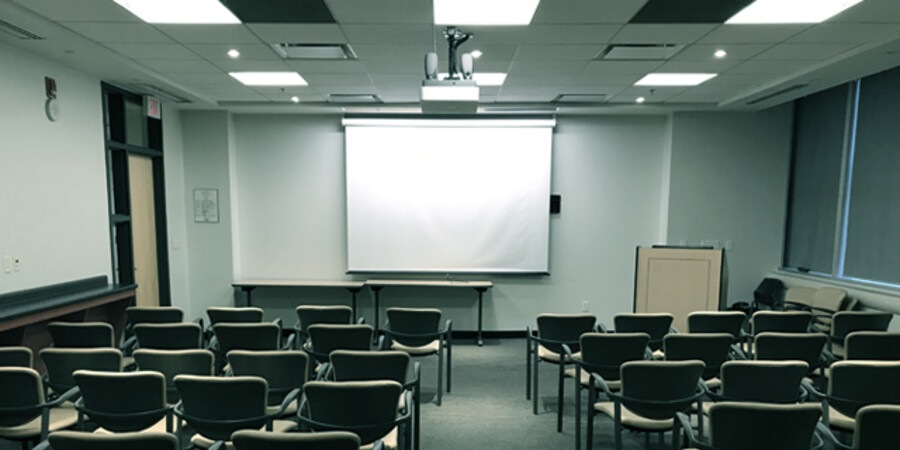Main Second Level Navigation
- Important Dates and Deadlines
- Student Handbook, Module Booklet and Forms
- Awards and Scholarships
- Program Fees and Stipends
- Graduate Student Guidelines
- University of Toronto Policies
- Courses, Registration and Enrolment
- Graduate Student Seminars - MBP 1015Y
- MedTech Talent Accelerator
- Student Life
- MBP General Resources for Students
Breadcrumbs
- Home
- Current Students
- Graduate Student Seminars - MBP 1015Y
- Graduate Seminar Guidelines
Graduate Seminar Guidelines

Seminar Guideline Presentation
Use the guidelines in the slide deck posted below as a checklist for a good presentation. There are a lot of easy ways to improve your mark by following these instructions.
Introduction to Biophysics Seminar MBP 1015Y - 2023
Download the Instruction Slide for 'Zoom Meeting' Seminar Presentations
General Seminar Guidelines for Students
- Prepare your talk well in advance. You will be speaking to an audience which is diverse, both in research specialty and in experience. Plan your talk to provide an overview of your field showing where your work fits in. Describe your experimental methods so they are understandable, but not in excruciating detail. Present current results, discuss them and indicate future directions. You may have to be selective; don't try to cover too much. Try to do this in 20 to 25 minutes, leaving 5 to 10 minutes for questions and discussion.
- It is natural, even beneficial, to be a bit nervous for a talk. One of the purposes of the course is to give experience in handling this. One way to deal with nerves is to be prepared well in advance, and to rehearse, privately as well as publicly, what you want to say. Often the talks that sound the most spontaneous are the most carefully prepared. Avoid memorization of everything you want to say, as forgetting the next sentence will result in increased nervousness and hence, additional memory lapses. Memorize only the key words.
- Do not read your slides, this is very distracting to the audience, be well balanced in introduction/motivation and result presentation.Question period can be a chance to show off but avoid being condescending, patronizing or aggressive, whatever the tone of the question. Remember, many in the audience are not expert in your field and sometimes a simple clarification may be necessary. If you don't know or cannot answer a question, say so. Any relevant information or speculation around the question may help in this situation, as long as it is clear that this is speculation.
- SUBMIT YOUR ABSTRACT ON TIME! The abstract should be concise, clear and free of jargon. It will be circulated to the rest of the Department in an E-mailed seminar notice. If your abstract is not received on time the seminar notice will be sent out without your abstract, reflecting poorly on you.
- Keep your slides or transparencies simple. Whatever medium you choose, help your audience understand what is going on: identify axes and units on graphs, explain the anatomy or geometry involved in images and the significance of features to which you are referring. Do not include figures if you are not referring to them.
- Construct your slides with care. Below are some useful recommendations from the American Association for Cancer Research for preparing effective slide presentations.
- FOR COMPUTER GENERATED SLIDES: pay close attention to your color selection. Use a PLAIN background. Textured or "busy" backgrounds are distracting and do not add to your presentation. Make sure your text and lines are in colors that contrast well with your background color. Red and black are not visible on a blue background (even though it may look ok on the computer, the slides will not be legible). Large, bold fonts such as Helvetica or Geneva are easier to read compared to Times or Times Roman. Beware of animation! Avoid a dark background as this reduces the overall brightness in the lecture room.
- Speak clearly and towards the audience. Use notes to assist you if necessary, but do not read your talk. Even if you think that you can be heard clearly, we have found it best to use the microphone. Make sure that you have mastered the lighting, slide projector, pointers and other technical aspects of the room in advance. Verify with sufficient time prior to your presentation that the technical aspects including a pointer is available.
- Remind your supervisor to attend. They will introduce you and chair the discussion.
Slide Preparation Recommendations (from the American Association for Cancer Research)
- The most effective slides utilize black lettering on a white background, or white lettering on a blue background.
- All lettering should be horizontal, never vertical.
- Slides should be simple enough to comprehend at a glance. No more than six to eight lines of information should appear on each slide. Using only essential words (rather than full sentences) will reduce the number of lines without any loss of valuable information.
- Each line of text should contain no more than 50 characters, including spaces.
- A title or heading for each slide is recommended as a means of orienting the audience.
- One idea per slide is the most effective form of presentation.
- One minute per slide is a useful time limit; a slide that requires more than a minute for explanation or comprehension is usually too complex.
- If a particular slide is to be used more than once during the presentation, a duplicate should be made and inserted in the proper sequence to avoid confusion or the projection of the wrong slide.
- Lettering and Spacing. Block letters, preferably from bold, gothic typefaces, are preferable to light, roman typefaces or italicized or slanted letters.
